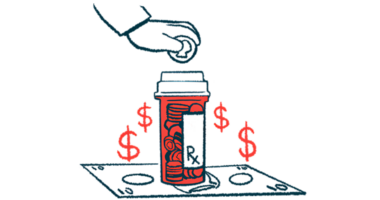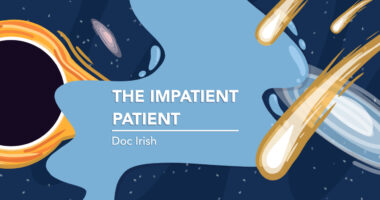That moment the ball is in the air: A guide to living with uncertainty
I want to dwell in the middle space where new ideas are born

There’s a moment in every close basketball game that feels almost supernatural. The clock is ticking down, a desperate shot goes up, and in the space of a heartbeat, the whole arena goes silent. The ball is in the air. Will it go in?
That thin slice of time — after the ball leaves the player’s hand, but before it hits the rim — is pure uncertainty. The rules are clear, the stakes are real, and it could go either way. Nobody knows, but everybody cares. And we love it.
We call that moment excitement or drama. It’s also a moment of uncertainty. Of not knowing — yet.
There’s also uncertainty in living with Parkinson’s disease — in refreshing a patient portal, waiting for test results, rehearsing questions in the neurologist’s waiting room, wondering if a medication change will help or backfire — just without the cheering crowd.
3 kinds of uncertainty
With Parkinson’s, though, not all uncertainty is the same. I keep coming back to three flavors:
- Chaos: This is the “everything is falling apart” version of symptoms fluctuating wildly, appointments moving, and news headlines contradicting each other. It feels like there are no rules and no map. My nervous system doesn’t get curious in that state; it just wants to grab onto something, anything, that looks solid.
- Fake certainty: This is trickier. It often sounds like confidence or optimism: “We know exactly what’s going on.” “Just follow the standard playbook.” “The cure is right around the corner.” Those lines can be comforting in the moment, but there’s a hidden cost. When we cling to them too tightly, we quietly shut down honest conversations about what’s still unknown. It gets harder to admit when things are working as hoped or when something important is being missed.
- Magic uncertainty: This is the kind that feels more like that shot in the air. We still don’t know the outcome, but we’re engaged instead of frozen. We’re allowed to say, “Here’s what we know, here’s what we don’t, and here’s what we’re going to try.” Attention sharpens. Curiosity awakens. We move from “What if everything goes wrong?” to “What might be possible?”
That third kind of uncertainty is the kind I’m trying to practice. For me, it shows up in experimentation. What happens if I adjust my meds by a little? Does a short walk before an appointment change how I feel in the exam room? If I add music, rhythm, or visual cues to my exercises, does my body respond differently?
None of those questions come with a guarantee. That’s the point. I’m exploring the middle ground between “definitely worse” and “definitely better” because that’s where I keep finding useful clues.
Reaching for the ugly win
The same shift applies to conversations with my care team and my community. Asking to be told that everything will be fine is a plea for fake certainty. But “Tell me what we know, what we don’t know, and what we can try next” is an invitation into magic uncertainty. They turn me from a passenger into a participant.
I sometimes picture all of us — clinicians, patients, families — as teammates on the same underdog team. We’re in the locker room at halftime, behind on the scoreboard, tired and maybe a little banged up. Nobody knows how the second half will go. But we can huddle, compare notes, tweak the game plan, and try different plays. We’re not waiting for a hero to rescue us; we’re learning how to win ugly together, one possession at a time.
I can’t choose if uncertainty shows up in my life. It already has. What I can choose, at least on my better days, is which kind of uncertainty I stand inside. I can stay in chaos, overwhelmed and shut down. I can hide in fake certainty, repeating lines I don’t really believe. Or I can stand, a little wobbly but awake, in that honest, edge-of-my-seat middle space — aware of the risk, but also open to surprise.
That middle space is where better questions begin. It’s where new ideas and therapies are born, and where patients and families discover creative ways to adapt. It isn’t easy, and it isn’t neat. But it’s alive.
So the next time you find yourself in a season of not knowing, try pausing before you slam the door on that feeling. Ask what kind of uncertainty you’re in. And if there’s even a hint that you might be in that third kind — ball in the air, outcome not fixed, story still being written — don’t look away. That might be the moment when a whole new playbook becomes possible.
Note: Parkinson’s News Today is strictly a news and information website about the disease. It does not provide medical advice, diagnosis, or treatment. This content is not intended to be a substitute for professional medical advice, diagnosis, or treatment. Always seek the advice of your physician or another qualified health provider with any questions you may have regarding a medical condition. Never disregard professional medical advice or delay in seeking it because of something you have read on this website. The opinions expressed in this column are not those of Parkinson’s News Today or its parent company, Bionews, and are intended to spark discussion about issues pertaining to Parkinson’s disease.








Leave a comment
Fill in the required fields to post. Your email address will not be published.